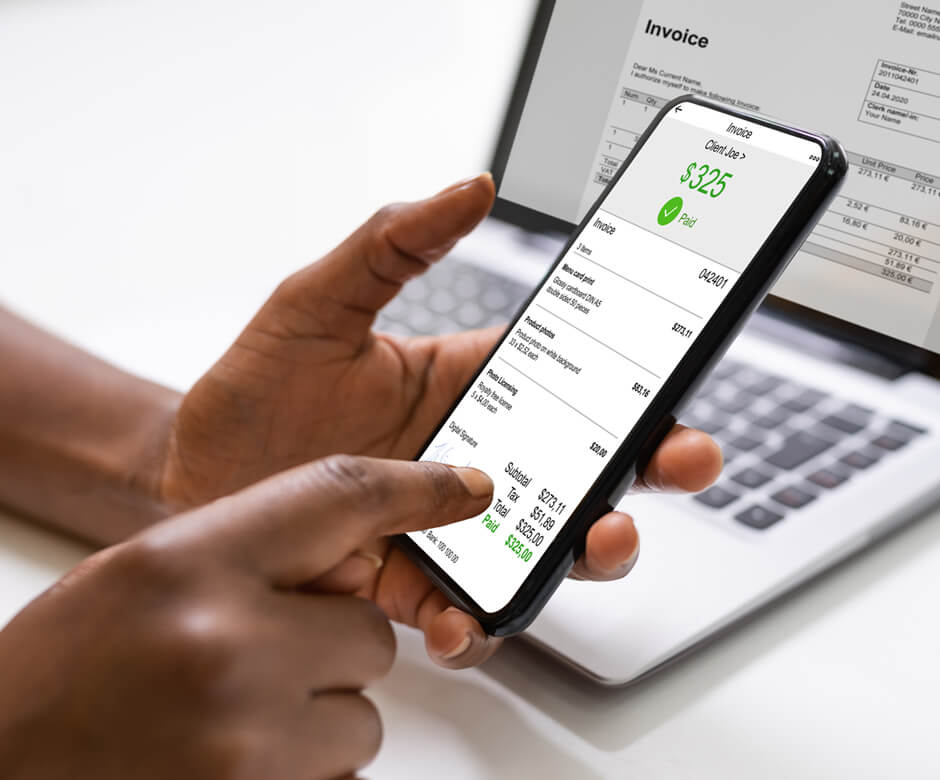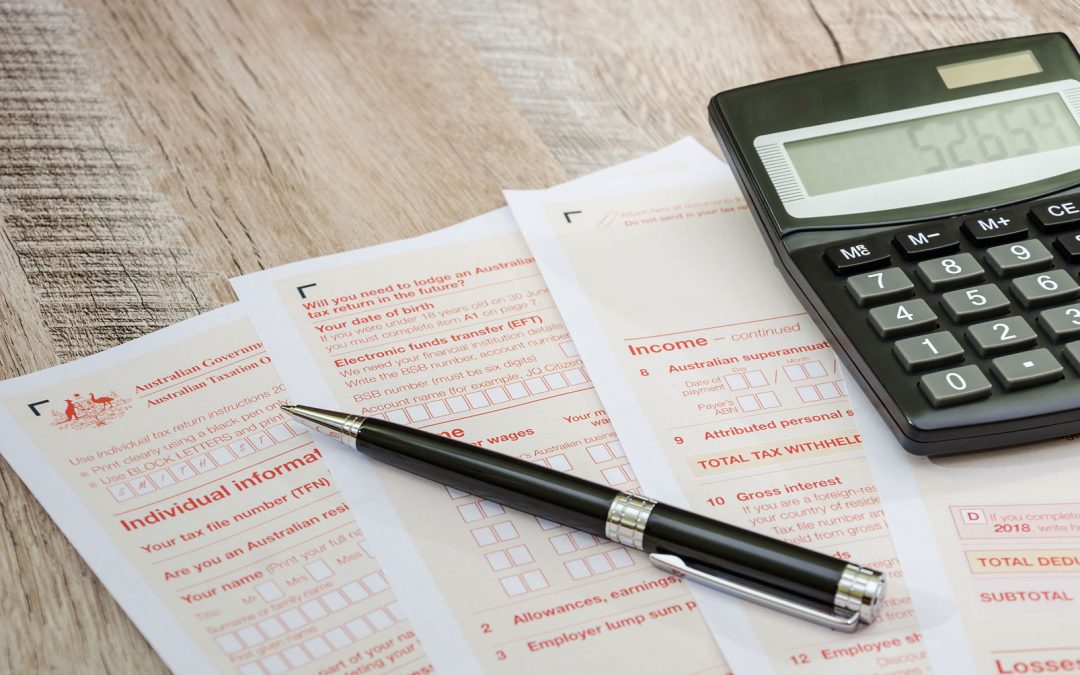7 Steps to Maximise Your Work-From-Home Tax Deductions
.
Tax time is around the corner, and I’ve been working from home – how can I ensure I’m claiming everything I can?” This is a question we hear a lot. And if you’ve found yourself asking the same thing, you’re in the right place.
Understanding work-from-home tax deductions can seem challenging. You know there are running expenses you can claim, but which ones exactly? How do you calculate these additional expenses under the fixed rate method or the actual cost method? Most importantly, how can you use these deductions to lower your taxable income, leading to a larger tax refund?
We understand your concerns, and we’re here to guide you. Here’s our easy-to-follow, seven-step process to ensure you’re making the most of your Work from home tax deductions. To learn more about recent updates on the revised fixed rate method on claiming WFH deductions, read our article “New ATO guidelines on the revised fixed rate method for work from home claims”.
Step 1: Determining Your Work Status– Are You an Employee or a Business Owner?
Your status matters because the Australian Taxation Office (ATO) offers different guidelines for employees and business owners.
If you are an employee, you can claim working-from-home deductions in two ways: the revised Fixed Rate method or the Actual Cost method.
If you are a small business owner, operate your business as a sole trader or partnership, you can claim a deduction for the costs of running your business from home. there are 2 types of expenses for your home-based business – running expenses and occupancy expenses.
For instance, Sue, a hairdresser, uses her home garage as a salon. As a sole trader, she falls under the category of a business owner. Her eligibility for certain deductions will be different from someone who’s an employee. On the other hand, Sam, an IT Consultant, is an employee who has transitioned into remote work. His eligible deductions will depend on his personal circumstances and the nature of his work.
Step 2: Understand Your Work-from-Home Requirements
And importantly, is maintaining a home office a necessity for your job? Does your employer support you in this? If they don’t, why do you believe a claim can still be made? Emma, a bookkeeper, has been asked by her employer to work from home. She sets up a home office, purchasing necessary equipment and stationery. Given her situation, she is eligible to claim work-from-home deductions.
As a business owner, it’s crucial to define the nature of your business. How does your home serve your business operations? For example, a photographer might set up a studio at home. By identifying the specific ways you use your home for business, we can better determine your eligible deductions.
Step 3: Complying with ATO’s Three Key Rules
Having established your work-from-home requirements in step 2, it’s time now to focus on how you can claim those potential tax deductions. Your ability to do this rests largely on meeting the ATO’s 3 Golden Rules, which are key guidelines to decide if a specific work-from-home expense is claimable:
THE ATO’S 3 GOLDEN RULES FOR CLAIMING A DEDUCTION – Claim the right amount.
No more No less

You must have spent the money yourself (and not be reimbursed)

Use Occupation Tax Checklist
Get it Now

Golden Rule #1: You must have spent the money yourself and not been reimbursed
This rule insists that only out-of-pocket costs are claimable. If your employer has reimbursed you for an expense, it can’t be claimed. For example, you can claim stationery and office supplies that you’ve purchased with your own funds for work-related tasks at home, assuming no reimbursement from your employer.
So, when considering whether you can claim a work-from-home expense, ask yourself: “Did I pay for this myself, and was I not reimbursed?“
Golden Rule #2: It must be directly related to earning your income
When it comes to claiming work-from-home tax deductions, it’s crucial that your expenses are directly tied to your employment duties. This implies more than just checking emails or taking occasional calls; instead, your home office activities should encompass substantial and regular work-related tasks throughout the income year.
A range of home office expenses can be considered for tax deductions, including additional running expenses like electricity or gas for heating, cooling, and lighting your workspace, and home and mobile internet expenses. Stationery, computer consumables, and office supplies, along with the depreciation or decline in value of office equipment such as office furniture and computers, can also be claimed.
Bear in mind, these expenses should be more than just incidental to your private activities – they must be vital to carry out your work tasks. Always consider, “Is this cost directly related to my work tasks and not just my private life?“
Remember, the ATO provides specific methods, such as the revised fixed rate method and the actual cost method, for calculating your claims for these work-from-home expenses. Additional running expenses, energy expenses, and even occupancy expenses under certain conditions are part of these calculations. Though we will delve deeper into these methods in the following section, it’s essential to understand that to qualify for these home tax deductions, your expenses must be directly related to earning your income.
Golden Rule #3: You must have a record to prove it
You might be thinking, “Keeping track of all my work-from-home expenses seems like a massive task!” But trust me, it’s not as difficult as it sounds when you have the right tools!
Yes, it’s essential to hold onto receipts, bills, invoices, and bank statements tied to your home office expenses. Each of these pieces of proof should detail the expense, the supplier, the date of payment, and the nature of the goods or services purchased. These documents are critical when it comes to claiming work-related portions of your internet expenses, energy expenses, stationery, computer consumables, and even the decline in the value of your home office equipment.
You might be thinking, “That’s a lot of record keeping. How am I supposed to manage?” Well, we have a solution just for you! Our TMS Mobile App, available for FREE, is here to streamline your record-keeping process. This user-friendly app lets you capture photos of your receipts, invoices, and bills right from your mobile phone and safely store them for tax time. This way, you won’t miss out on any deductions due to misplaced receipts or forgotten expenses. Ready to simplify your tax record-keeping? Click here to download the app today!
By adhering to these three golden rules, you can confidently navigate your work-from-home tax deductions. And remember, every cent counts, so don’t overlook any potential deductions!
Step 4: Choosing the Right Method for Your Home Office Deductions
Method # 1 : The Revised Fixed Rate Method (Effective from 1 July 2022 onwards)
Energy expenses
These involve costs for lighting, heating, cooling, and operating electronic items for your employment duties.
Internet and data expenses
The cost of internet usage and data consumption while working from home is included.
Telecommunication expenses
These consist of mobile and home telephone expenses incurred for work.
Computer consumables
This includes stationery and computer-related items like printer ink.
It’s important to note that if you choose to claim the 67c per hour rate, you cannot claim an additional separate deduction for these running expenses.
Even with the Revised Fixed Rate method, you maintain the ability to claim actual depreciation for assets used while working from home. This covers items such as your computer, iPad, other electronic gadgets, desk, office chair, and furniture. For assets costing $300 or less, you have the option to claim the full amount immediately, instead of depreciating them over several years. Additionally, any repairs or maintenance costs for these assets can be claimed as well.
Using this method does not require a dedicated workspace in your home. So, whether you’ve set up your workspace at the kitchen table, your bedroom, or any shared space in your home, you’re still eligible to claim deductions. Even more, if there are other individuals in your household who are also working from home and bearing similar expenses, each one has the right to claim these expenses separately.
Here’s how you calculate your total deduction for running expenses using the revised fixed-rate method:
- Keep a record of the number of hours you worked from home during the year.
- Multiply the total number of hours you worked from home by 67c per hour.
- Calculate the decline in value of any equipment you used for work.
- Add up the amounts you calculated in steps 2 and 3. That’s the amount you can claim as a deduction on your income tax return.
Case Study
Let’s consider Dave, a bookkeeper who works from home three days a week. He uses his employer-provided laptop, home internet connection, personal mobile phone, and the lighting and air conditioning in his workspace. His employer reimbursed the cost of the chair and desk he uses.
Dave chooses to claim a fixed rate of 67 cents per hour for his work-from-home expenses. He works for 8 hours per day, 3 days a week, for 48 weeks, totalling 1152 hours during the income year.
He calculates his deduction by multiplying the total number of hours he worked from home by the hourly rate of 67c, which comes to $771.84. Since Dave isn’t entitled to a decline in value deduction for any depreciating assets, no additional amount is added to this figure.
When lodging his tax return for the income year, Dave claims a deduction of $772 for his working-from-home expenses.
Method #2 The Actual Cost Method
Designated workspace
Your home office must be a separate area used only for work.
Detailed records
- Maintain written evidence like receipts to show:
- Work-related expenses, including energy costs for heating and cooling your workspace.
- The cost of depreciating assets used for work, such as home office equipment and furniture.
The work-related proportion of your expenses and depreciating assets.
The Actual Costs Method may provide higher tax deductions but necessitates meticulous record-keeping. You need to track the exact hours you worked from home during the income year and keep a diary for a four-week period that represents your usual work pattern.
To claim the actual expenses, it’s crucial to have receipts, bills, and documents showing the additional running expenses and how they are work-related. This includes internet expenses, energy expenses, cleaning costs for a dedicated home office, and the decline in value of office equipment.
For each eligible expense, separate work and private use, substantiating each cost with calculations, invoices, and receipts. Cleaning expenses can be claimed if you have a dedicated home office, but you must account for any private use.
To sum up, the Actual Cost Method involves calculating the actual additional expenses you incur when working from home. You can only claim the work-related portion of these expenses as a deduction, provided you keep relevant records.
Step 5: Can You Claim Occupancy Expenses?
Occupancy expenses are the costs associated with owning, renting, or using your home that is not directly affected by your income-earning activities. To claim occupancy expenses when working from home, you must meet certain criteria:
- The expense was incurred in gaining or producing assessable income.
- Working from home is necessary because your employer doesn’t provide an alternative workplace.
- The area of your home used for work is exclusively or almost exclusively dedicated to work purposes and not readily usable for other purposes.
Occupancy expenses include mortgage interest, rent, council rates, land taxes, and house insurance premiums. As an employee working from home, you generally can’t claim occupancy expenses, as they are considered fixed costs that don’t change due to working from home.
However, if you run your business from home or use your home for business-related activities, you may be able to claim a portion of your occupancy costs. Keep in mind that claiming occupancy expenses may have capital gains tax implications.
To summarise, occupancy expenses can be claimed if you meet the necessary criteria. They include costs related to owning or using your home, but as an employee working from home, claiming occupancy expenses is generally not allowed.
Remember, occupancy expenses are separate from running expenses, which are associated with using facilities within your home for work purposes.
Continue to step 6 for further guidance on maximising your deductions and effectively managing your tax return process.
Step 6: Simplify Record Keeping with TMS Financials
At TMS Financials, we understand the importance of keeping detailed records for your work-from-home deductions. That’s why we offer free tools, including a digital app, to help you easily track and manage your receipts, invoices, and bills. Our daily template allows you to record your actual hours worked from home, which is now required by the ATO from 1 March 2023. By maintaining accurate records, you can ensure compliance and maximise your tax deductions.
To get started with our record-keeping tools and templates, simply provide us with your name and email, and we’ll send them directly to you. We’re here to assist you in organising your financial records and optimising your tax planning.
Step 7: Lodge Your Tax Return with TMS Financials
When it’s time to lodge your tax return, TMS Financials is here to help you navigate the complexities and determine the most advantageous method for maximising your tax deductions. Our expert team can assist you in evaluating your options, such as the revised fixed rate method or the actual cost method, based on your specific circumstances.
By taking proactive steps now, including tax planning and organising your financial records, you can achieve a better outcome and potentially receive a larger tax refund. Don’t miss out on the opportunity to reduce your tax liability.
To begin your tax planning or for further assistance with your tax return, reach out to us today. We’re ready to guide you through the process and ensure you claim all the deductions you’re entitled to.
Remember, your financial organization and accurate record-keeping will greatly contribute to optimising your tax deductions and achieving the best possible outcome. Let TMS Financials be your partner in this journey.
START MAXIMISING YOUR
WORK-FROM-HOME
TAX DEDUCTION TODAY!
Contact us for tax planning and assistance with your tax return.
Related Articles

Taking Money Out of Your Private Company: How to Avoid Division 7A Penalties
Taking Money Out of Your Private Company: How to...

Unlock the Benefits of a Bucket Company: Maximise Tax Savings and Protect Your Assets
Unlock the Benefits of a Bucket Company:...

Instalment Activity Statements (IAS) for Individuals & Businesses
Instalment Activity Statements (IAS) for...
Contact Us
Tax Insights & Business Advice
Receive only the guidance that matters. Subscribe now for personalised tips and expert advice, directly suited for you and your business.









